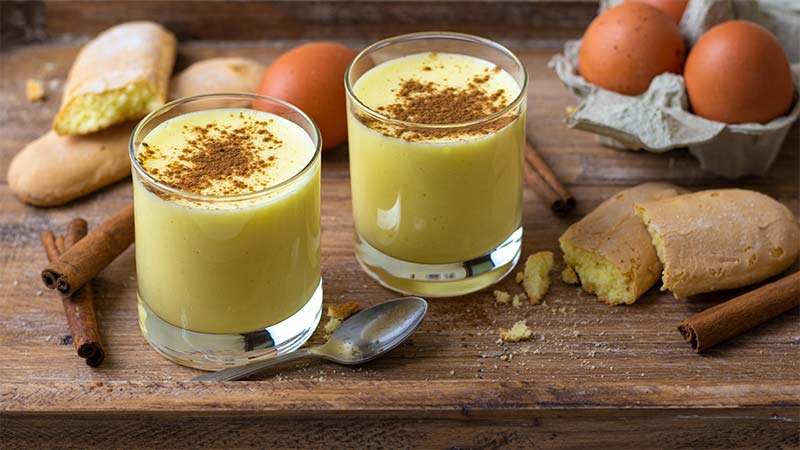Eggs, sugar and liqueur wine. Only three ingredients for one of the most delicious and mysterious creams in Italian gastronomic history. The origins of zabaglione are uncertain: it seems to have been born in the kitchens of Caterina de' Medici, while other sources report the first recipe for Zabaglione at the Gonzaga court. In the family it is considered a robust snack in its most rudimentary version...sweet childhood memories! In the pastry shop it becomes a light, liqueur and foamy filling that embellishes many desserts.
INGREDIENTS:
- Dry Marsala: 100g
- Sugar: 60g
- Yolks: 4
- Egg: 1
- Mix all the ingredients in a steel bowl (the ideal would be a bowl with a convex bottom); place on a slightly quivering bain-marie and mix with a whisk until you obtain a consistent and airy foam; work with regular but not very fast movements and accelerate when the zabaglione begins to become more consistent (it will take about 15 minutes).
- Serve it immediately, accompanying it with panettone or pandoro.
The zabaione can be kept for 3/4 days in the fridge and, before using it, it will be necessary to work it with a whisk
ADVICE:
- To obtain zabaglione with an intense and decisive colour, we recommend using yolks from yellow-fleshed eggs.
- Instead of granulated sugar, you can use the same amount of brown sugar.
- The vin santo can be replaced with marsala, or with a liqueur wine from your area. Otherwise dry white wine is also fine.
- With this recipe the alcohol content of the zabaglione will be 28°, but if you prefer a less alcoholic cream you can mix the zabaglione with the custard in the same quantities; in this way the alcohol content will be halved.





